Keeping the lights on in a Climate Emergency

When was the last time you experienced a power cut? When I grew up in the 1970s, evening blackouts were a frequent occurrence, as was stumbling around in the dark looking for the emergency candles and some matches.
Thankfully power cuts are now much rarer in industrialized nations (although 13% of the world population doesn’t have regular access to electricity at all). This is lucky. Most of us are utterly dependent on a large selection of plug-in devices that illuminate our evenings, entertain (and sometimes educate) our minds, cook our food, and clean our dishes. Most of us rely on electricity to work, to play, and increasingly to travel.
Whenever you plug one of those devices into a power socket, it’s easy to pretend that the electrical energy that flows through the wires is somehow generated from a “clean power source” such as wind, hydro, solar or nuclear.
This is a complete fantasy. Across the world, less than a quarter of electricity comes from renewable sources (wind, hydro, solar and biomass). About a tenth comes from nuclear power. More than two-thirds comes from the combustion of hydrocarbon fossil fuels (coal, natural gas and oil). Every kilowatt-hour of electricity that you consume comes at the cost of a puff of carbon dioxide that will ultimately contribute to climate change.
Of the 51 billion tonnes of greenhouse gas emissions that our species pumps into the atmosphere every year, 27% comes directly as a consequence of electrical power generation.
If we are going to avoid the worst effects of the climate emergency, the engineering community will have to use all of its ingenuity and innovation to quickly reduce that number close to zero.
In this article, we’re going to look at where our electricity comes from, how much carbon is emitted through generating it, and how many people typically die due to pollution and accidents while generating it. We also explore how engineering simulation (and test) is helping to enable a low-carbon electricity future.
Things that turn and things that burn
Electricity is not freely available in nature, so it must be “produced”. Today 97.3% of world electricity is generated by “things that turn”, converting kinetic energy into electricity by rotating magnets past coils of wire (an electromagnetic generator). Except for solar (which provides the other 2.7%), the major difference in power generation methods depends on how that motive force used is generated.
21.1% of electricity is generated by harnessing natural forces of wind water to turn the blades of wind and water turbines. This share of electricity generation is increasing rapidly (as evidenced by the numerous wind turbine arrays that now grace our coastlines and rural landscape).
The problem with these sources is that they suffer from intermittency – they don’t produce electricity when the wind isn’t blowing, the sun isn’t shining, or water isn’t flowing quite as fast as expected.
The vast majority of electricity (73.7%) comes from “thermal power stations”. Heat energy is converted into electricity by boiling water which is forced as steam through large turbines that rotate the generators. Nuclear energy is one source of thermal power, accounting for 10.4% of electricity generated. 63.3% of all electricity generation the thermal energy is provided by “things that burn”, mainly the coal (36.7%), gas (23.5%), and oil (just 3.1%), all of which obviously produce copious amounts of carbon dioxide and nitrous oxide emissions.
Although our use of low-carbon sources is slowly increasing, our dependence on fossil fuels is actually growing. Between 2000 and 2020 fossil fuels share of energy production declined from 64.8% to 63.3%, but at the same time, overall demand increased.
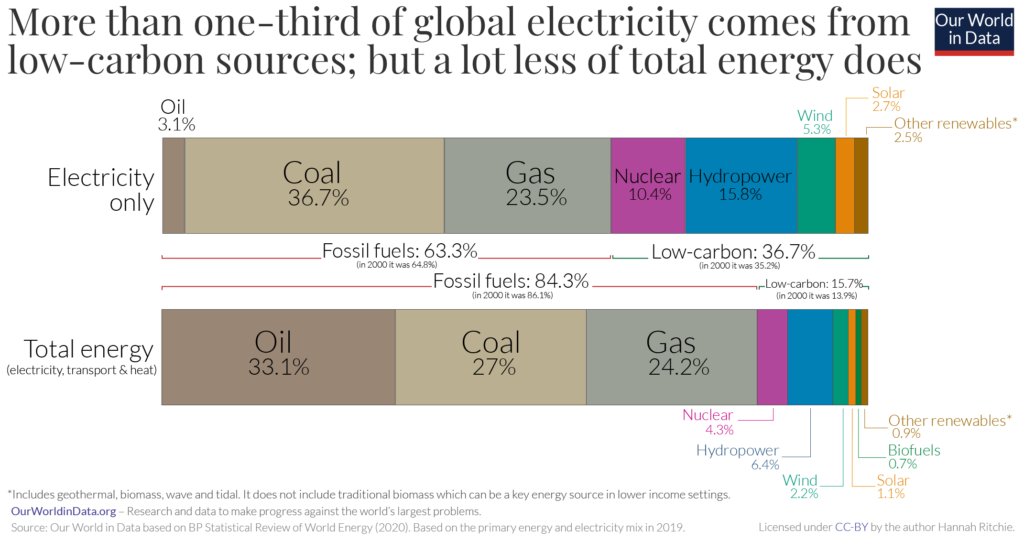
The human cost of electricity generation
In this article, I’d like to measure the human cost of electricity production in the starkest possible terms. For each source, we’ll consider the carbon emissions caused by it and how many people typically die due to the production process, from air pollution and accidents.
To do this, we’re going to conduct a thought experiment. Imagine two small towns, one in the USA with a population of 11,000, one in the EU with 27,000. Each town would consume about 1 TWh of energy to meet all their needs for a single year. The American town is smaller because Americans on average consume much more power than Europeans (70MWh per year compared with 37MWh in 2015).
Now let’s imagine that each of those towns gets all their energy from a single local source. To provide 1TWh of electrical power, how many people in each town would die due to the production of that energy? How much carbon dioxide is emitted in generating all their electricity for a year?
Coal
Coal is cheap, plentiful and unfortunately very dirty. Burning coal emits large quantities of carbon dioxide and other airborne pollutants. 240 years ago, the very first power stations used coal-fired steam engines as their means of generation. Ever since then, coal has retained the largest share of electrical power generation. Coal-fired power stations currently account for 36% of all electricity generated.

Coal is useful as an “always-on” baseload capacity for many national electricity grids. As we’ll discuss below, the only real alternatives for this role are nuclear and gas.
Various moves towards the so-called “clean-coal” involve capturing and sequestering the carbon dioxide emitted during its combustion. Currently, those systems are technologically immature and prohibitively expensive. However, Simcenter is being used to engineer better carbon capture and storage solutions. Whether or not this will arrive in time to provide an immediate solution for the climate emergency is a subject of much debate. As enticing as the prospect of retrofitting technology to coal-fuelled power stations is, my opinion is that this technology is too immature, too ineffective and too expensive to provide any practical benefit within reasonable timescales.
But the climate emergency isn’t the only reason that we need to stop burning coal. Every TWh of electricity that we produce from coal comes at the cost of more than 24 deaths, mostly through the consequences of air pollution, but also as a result of mining accidents. Across the world, burning coal for electricity causes the premature death of around 215,000 people.
Most people would agree that we need reduce coal’s share of the electricity generation market to close to zero.
Nuclear
In the 1960s, “atomic power” seemed to offer an almost unlimited supply of cheap and clean energy. However, a combination of poor plant economics, reliability issues and environmental and safety concerns have damaged nuclear power’s reputation, causing the premature closure of existing power stations and a reduction in the support for commissioning the next generation of reactors. Since the mid-1980s, the world supply of nuclear energy has plateaued and is beginning to decline, as old reactors go offline faster than new reactors are commissioned.
Some safety concerns are overstated, based on the horror and hysteria surrounding Chernobyl and Fukushima. As I described in an earlier article, “Safer than wind? The truth about nuclear power” on a “deaths per TWh” basis, nuclear power is one of the safest of all power generation methods and is orders of magnitude safer than fossil fuels (especially coal).
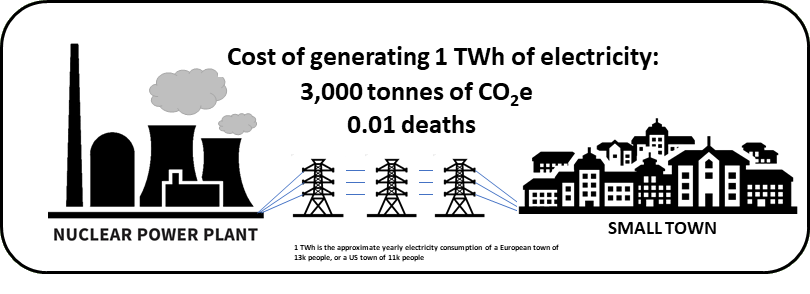
However, whether rational or not, the fear of catastrophic nuclear accidents has created an overly conservative regulatory and licensing environment that stifles innovation: “Nuclear plants have seen their costs relentlessly rising for decades, mostly because of increasing caution about safety. And the industry remains insulated from the one known human process that pulls down costs: trial and error,” writes Matt Ridley in “How Innovation Works“.
The truth is, before it was adopted by the automotive and aerospace industries, much of the modern simulation industry owes its origins to the nuclear industry, from which many of the existing commercial simulation providers emerged. Nuclear reactors are extremely complicated and in those early simulations could only tackle small parts of the problem, often using simplified physics.
Today’s simulation tools are much more sophisticated. In “Towards a Virtual Reactor”, I describe how Simcenter is being used to create comprehensive digital twins of Generation IV reactors, such as those planned by TerraPower and X-Power.
Simcenter STAR-CCM+ was the first commercial CFD tool to receive achieved ASME Nuclear Quality Assurance-1 compliance.
In his book “How to Avoid a Climate Disaster“, Bill Gates describes the role of simulation in the design of the TerraPower reactor that he is sponsoring: “we set up a lab of supercomputers in Bellevue Washington, where the team runs digital simulations of different reactor designs.” Much of that simulation work is performed using Simcenter STAR-CCM+, as you can see from the excerpt from the Netflix documentary about the reactor:
Gas
Although all fossil fuels are bad, some are significantly “less bad” than others. Thankfully oil is almost obsolete for large scale power generation (due to the economics of its fluctuating price), and natural gas is much cleaner than coal. Compared with a brand-new coal-based power station, a modern natural gas turbine generates 50 to 60 per cent less CO2 per MWh of electricity generated.

As we transition towards a clean-energy future, gas turbines play an essential role in providing a buffer between the intermittent green energy sources (solar and wind) and the “always-on” baseload sources (mainly nuclear and coal). Gas turbines keep the power on when the sun isn’t shining and the wind isn’t blowing.
From an air pollution point of view, gas turbines are also running cleaner than ever. With the almost universal adoption of “lean premixed combustion” technology (in which the fuel is mixed with air to reduce the temperature of combustion), modern gas turbines routinely deliver so-called “single-digit” NOx emissions when operating at full load.
However – in their new intermittency balancing role – gas turbines designed to operate under continuous full load are increasingly being called upon to run under a fluctuating partial load, often starting from cold. In these conditions, NOx emissions are often much higher than under full load.
The good news is that there is no inherent reason why gas turbines have to burn fossil fuel hydrocarbons. Gas turbines are naturally “fuel flexible”, so attention is increasingly turning towards so-called synthetic fuels such as hydrogen (H) and ammonia (NH3). These fuels contain no carbon, and therefore do not emit any CO2 during the combustion process. But once again, NOx can be a problem, as can thermoacoustic oscillations that could limit the operation of the gas turbine or (in extreme cases) damage it.
Simcenter is being used to design the next generation of fuel-flexible low-carbon gas turbines that minimize the risk of thermoacoustic oscillations and reduce NOx emissions in gas turbines operating under a partial load.
Of course, manufacturing those synthetic fuels is not without its challenges. In a “Gray, Blue, Purple, or Green: What colour is our low carbon hydrogen future?” I explain how 87% of hydrogen production currently comes from fossil fuels and explore the challenges and opportunities of greener methods of manufacturing synthetic hydrogen.
Wind
About 25 years ago, when I first started travelling for business, I remember looking in awe at banks of offshore wind turbines as I flew into Germany and the Netherlands. Today wind turbines, both onshore and offshore, are so common that they hardly register in my consciousness.
Wind power has been one of the successes of the green-energy revolution, but despite the proliferation of wind turbines, wind power still only generates about 10% of worldwide electricity. In many countries, potential sites for onshore wind turbines have been almost entirely exploited.
So the trend for wind power is for much bigger turbines, often located further and further offshore. One Chinese manufacturer is planning to build a 16MW offshore turbine with a 242-metre diameter rotor, that is capable of powering more than 13500 homes.
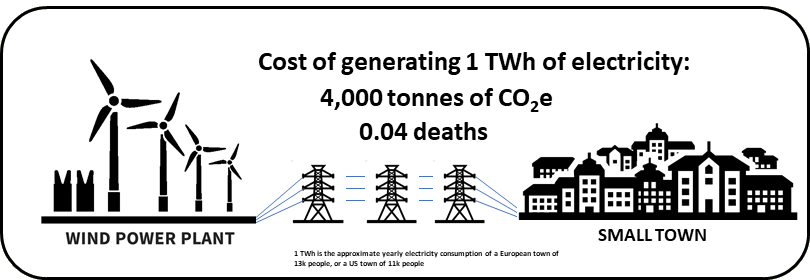
Enormous offshore structures, which have to operate reliably in hostile and remote locations, obviously present a considerable engineering challenge.
“One of the challenges in designing offshore wind turbines is the high cost and logistical difficulties involved in physical testing,” says AREVA Wind’s Yvan Radovcic. “Fully testing a single blade assembly costs several hundred thousand euros. Physical testing is also limited by the wind and wave conditions that happen to be experienced during the testing period.” AREVA used Simcenter to simulate the complete drive system; performing testing of thousands of load cases for each phase of the assembly process, with potential savings of up to $500m per turbine.
Wind gearboxes are a critical part of the turbine as they translate relatively slow-moving rotation from the large blades to a much higher rotational speed needed for the onboard electrical generator. These systems consist of multistage planetary and helical gear sets. These gearboxes generate a large amount of heat in the bearings and gear mesh contacts, and without adequate thermal management can result in catastrophic failure. ZF Wind Power used Simcenter to design and validate its cooling strategies for wind turbine gearboxes.
In remote offshore locations, it becomes difficult to monitor the condition of wind turbine blades, which are subjected to enormous stresses, using human interaction alone. Manufacturers such as ReliaBlade use Simcenter to construct comprehensive digital twins that monitor turbine blades throughout their operational lifetime, using sensor technology embedded in the blade structure. The system can alert wind turbine owners of potential problems or damage developing in the blade.
This allows the wind turbine owner to either change how they operate the turbine or make a repair decision before the issue becomes too critical. For offshore wind farms, this means scheduling the repair when it is easier – say on a summer day – rather than an emergency intervention during a winter storm. “With the monitoring systems that can come with a digital twin, you have an opportunity to intervene before it becomes a problem and therefore make these structures more reliable,” says Kim Branner, a senior researcher and at the DTU Wind Energy Department.
Hydro
If the geography of your region allows it, hydroelectricity can provide a source of relatively low-carbon electricity or, in the case of pumped hydro, an energy storage solution that can be used to even our the intermittency of wind and solar power.
However, there is a negative side to large scale hydroelectric power facilities. The most suitable locations have already been exploited (at least in Europe, America and Oceania). Submerging large tracts of land underwater has huge environmental and social consequences, displacing communities and wildlife. It can also be a source of carbon emissions, as the carbon sequestered in the submerged soil is released as methane (a potent greenhouse gas). Because of this, and the amount of concrete used in their construction, large scale hydroelectric projects have a higher carbon footprint than other renewable energy sources.
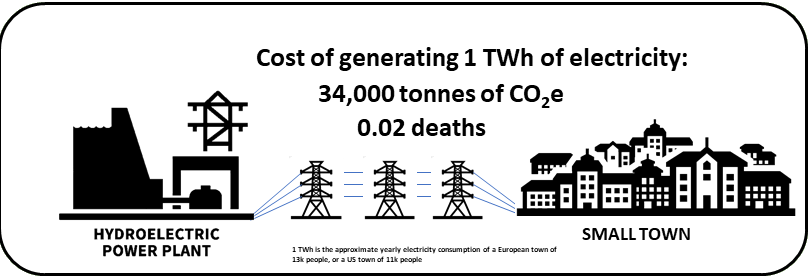
Once a hydroelectric plant is operational, it can reliably deliver large quantities of electric power for a long time (although flow rates and output vary seasonally). Taking one of the enormous water turbines offline for maintenance is expensive (and probably involves temporarily switching to higher carbon generation methods).
Hydro-Québec is the largest power utility in Canada and a significant player in the global hydropower industry, operating 60 hydroelectric power stations. Hydro-Québec uses Simcenter testing solutions to measure and analyze the vibration levels of the turbines. The objective of the tests is to evaluate turbine conditions to predict maintenance needs. Ultimately, the tests aim to improve the planning of maintenance intervals and minimize turbine downtime. Using this data, their engineering team carries out investigations to find out if the power output of a turbine could be increased without jeopardizing the safety or reliability of the equipment and with a minimal impact on the turbine’s lifetime. Although this innovative approach is still being consolidated, it already yields astonishing results: a power increase in some generators of 15 to 20 percent.
Solar
In our discussion so far, we have neglected the fact that our nearest star (the Sun) continuously provides us with 173,000 TW of free energy, more than 100,000 times our species’ total energy consumption. The problem is harnessing that energy and turning it into a useful supply of electricity. Unlike other renewable energy sources, which generally require boiling water to drive turbines, solar power can be directly converted to electricity in photoelectric cells.

Compared to other low-carbon electricity generation methods, solar generation at scale is a relatively modern development. Solar currently provides only around 4% of world electricity, although that share is rapidly increasing.
Like wind energy, solar power suffers from the problem of intermittency: solar power output obviously varies throughout the day, and in most places with the time of year. Part of the problem with solar is that – unlike wind – the areas which have the highest solar irradiation are not necessarily the places that have the highest electricity consumption. Electrical transmission losses make large scale solar installations in deserts (say) less practical than they might seem. These types of installations might make more sense if we could store that energy in a transportable form, such as hydrogen, for use elsewhere. In this example, we can see how Simcenter might be used to manage that process, and even out the energy supply from intermittent wind and solar installations.
Simulation is the key to low-carbon (and low-emission) electricity future
We need to stop burning fossil fuels to provide electricity. Not only are they a significant contributor to climate change, but also the pollution that they emit causes death. Unfortunately, the transition to lower-carbon electricity is not happening quickly enough. Although there has been relatively rapid growth in some renewables, the nuclear fleet is declining, and increased demand in Asia is being met through fossil fuel.
In our thought experiment, we looked at the number of deaths that would result from a European town of 27,000 people or an American town of 11,000 people. If the town’s electricity was provided only by coal, then about 25 people a year would die as a consequence.
Of course, no one gets all their energy from a single source like in the thought experiment towns. If you consider the current mix of energy sources in the EU and the US, you’d expect about 11 deaths in each town (remembering that the American town is much smaller than the European one).
If you do that calculation across the whole world – 2.17 million people die every year as a direct consequence of power generation. This is comparable with the yearly death toll from the coronavirus pandemic. This number would be much higher if everyone in the world consumed energy at the same rate as Americans or Europeans (which is the aspiration of many people from elsewhere).
Fortunately, the lowest-carbon sources of energy production are also those that cause the fewest deaths:
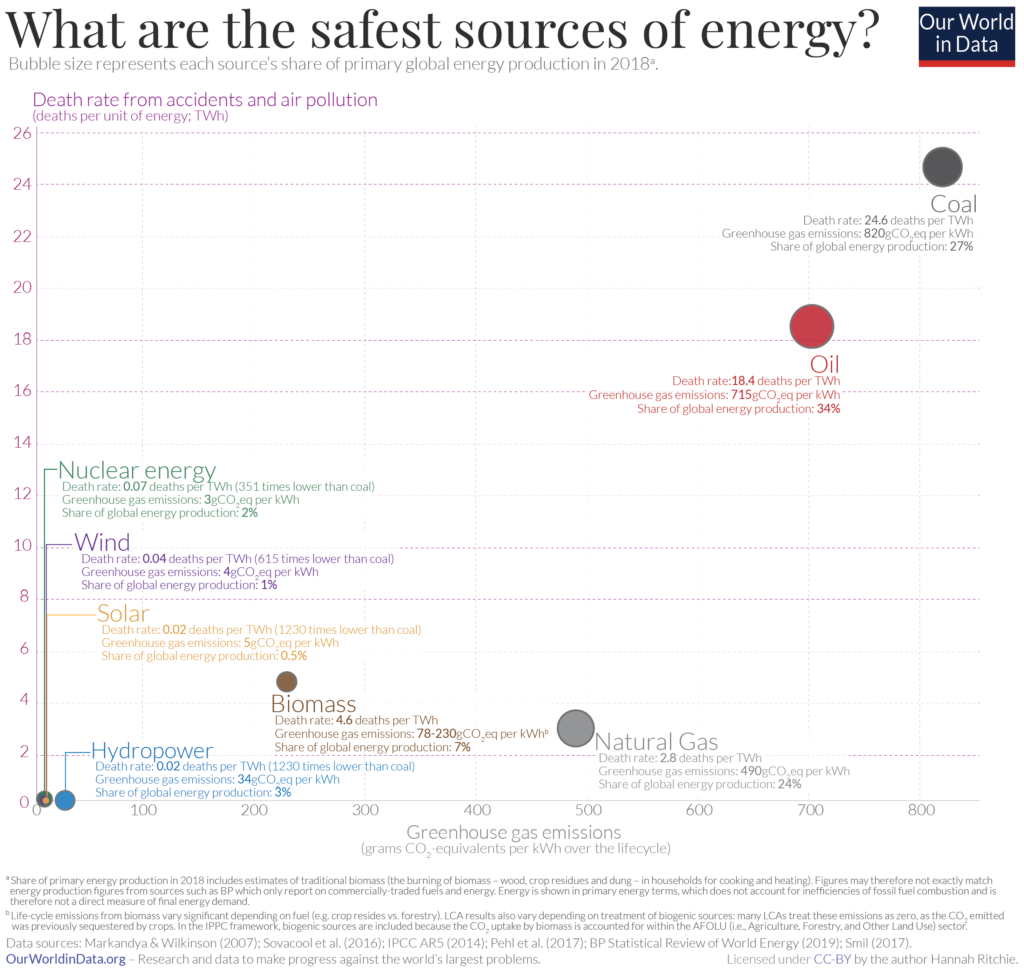
If we are going to avoid the worst effects of the climate emergency, the engineering community will have to use all of its ingenuity and innovation to quickly reduce that number close to zero. Engineering and test is the key to unlocking that innovation and delivering a low-carbon electricity future.

Comments
Comments are closed.

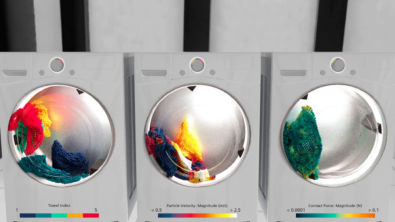
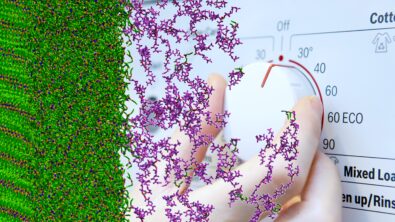
Goodnight
Companies such as siemens invest in an existing and proven power generation project. Today we do not have investors to develop a new source of energy generation.
There are many people (maker) developing interesting projects, lacking investment and technical support to accelerate projects.
I am studying, researching and developing a small prototype of a new source of energy generation.
Formerly a few centuries past, it had several geniuses and important concepts. But the world has provoked several industrial developments in the wrong direction, and has provoked minimal use of the old inherited knowledge and concepts.